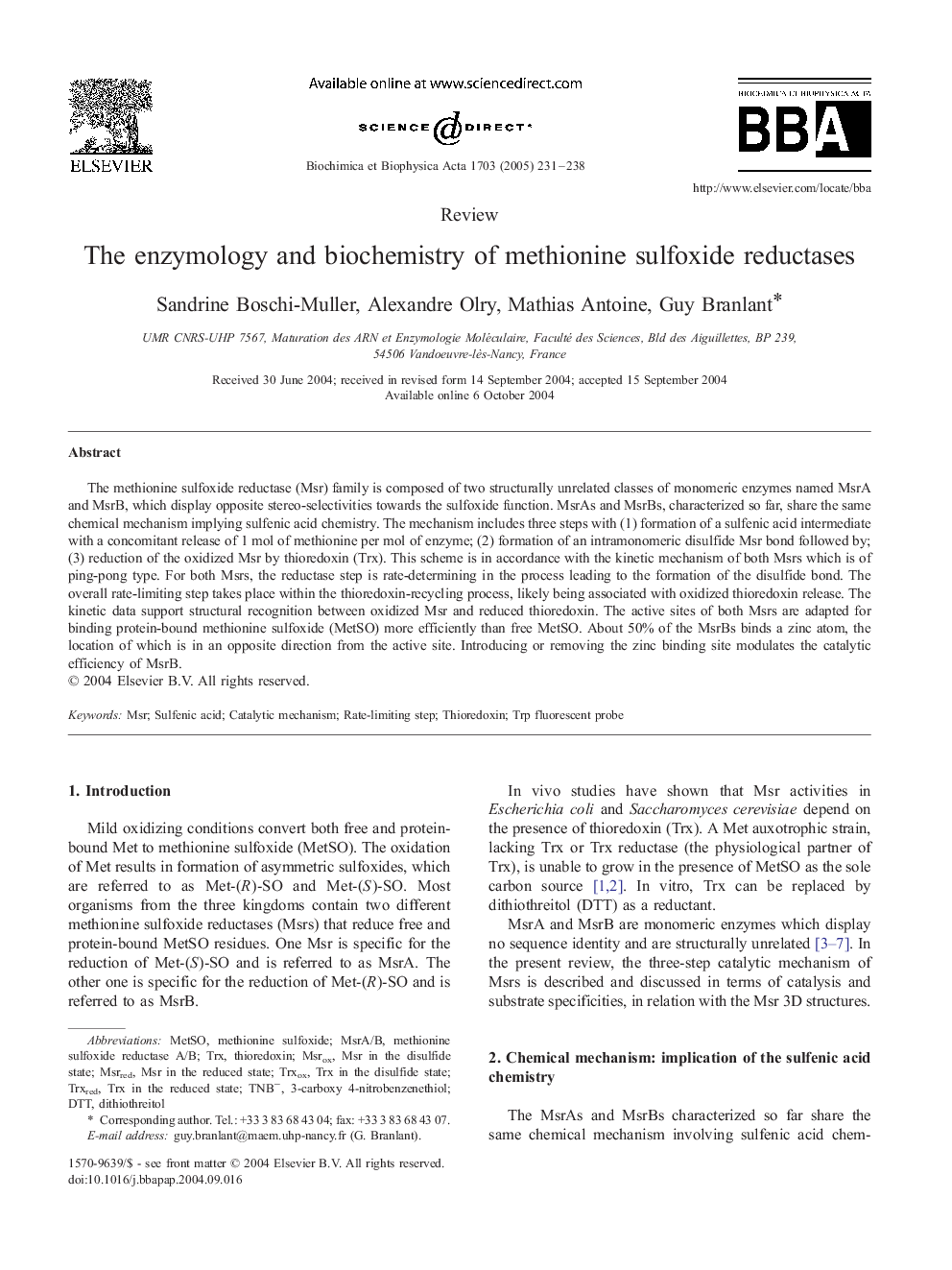| Article ID | Journal | Published Year | Pages | File Type |
|---|---|---|---|---|
| 9745128 | Biochimica et Biophysica Acta (BBA) - Proteins and Proteomics | 2005 | 8 Pages |
Abstract
The methionine sulfoxide reductase (Msr) family is composed of two structurally unrelated classes of monomeric enzymes named MsrA and MsrB, which display opposite stereo-selectivities towards the sulfoxide function. MsrAs and MsrBs, characterized so far, share the same chemical mechanism implying sulfenic acid chemistry. The mechanism includes three steps with (1) formation of a sulfenic acid intermediate with a concomitant release of 1 mol of methionine per mol of enzyme; (2) formation of an intramonomeric disulfide Msr bond followed by; (3) reduction of the oxidized Msr by thioredoxin (Trx). This scheme is in accordance with the kinetic mechanism of both Msrs which is of ping-pong type. For both Msrs, the reductase step is rate-determining in the process leading to the formation of the disulfide bond. The overall rate-limiting step takes place within the thioredoxin-recycling process, likely being associated with oxidized thioredoxin release. The kinetic data support structural recognition between oxidized Msr and reduced thioredoxin. The active sites of both Msrs are adapted for binding protein-bound methionine sulfoxide (MetSO) more efficiently than free MetSO. About 50% of the MsrBs binds a zinc atom, the location of which is in an opposite direction from the active site. Introducing or removing the zinc binding site modulates the catalytic efficiency of MsrB.
Keywords
Related Topics
Physical Sciences and Engineering
Chemistry
Analytical Chemistry
Authors
Sandrine Boschi-Muller, Alexandre Olry, Mathias Antoine, Guy Branlant,
